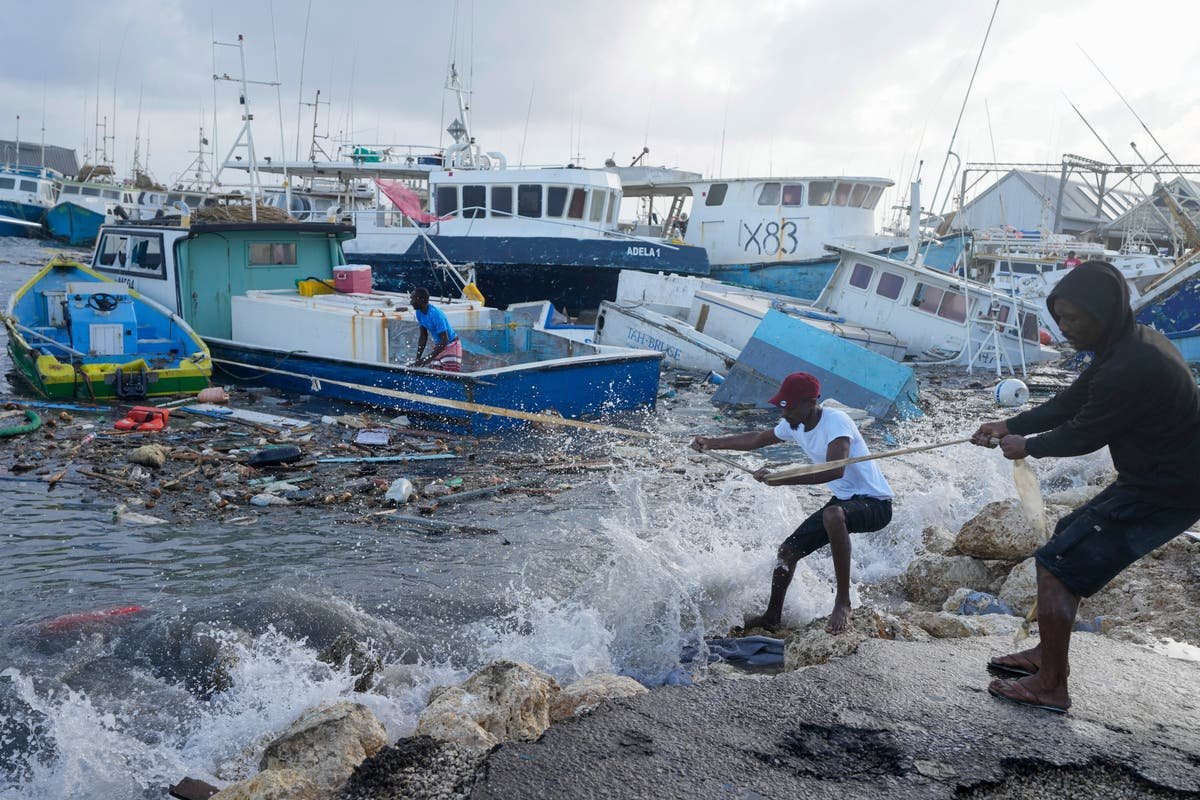Hurricane Beryl’s Impact on Grenada: Grenada Hurricane Beryl

Grenada hurricane beryl – Hurricane Beryl, a Category 3 hurricane, made landfall on the island of Grenada on July 5, 2023, causing widespread damage and disruption. The hurricane brought heavy rainfall, strong winds, and storm surges, leading to flooding, landslides, and infrastructure damage.
As the storm rages on, wreaking havoc in its wake, one can’t help but be reminded of the peculiar world of the world ugliest dog contest. Just as nature can unleash its wrath, so too can the realm of canine aesthetics.
Yet, amidst the devastation, there is a glimmer of hope, a reminder that even in the darkest of times, there is beauty to be found in the most unexpected places. And as Hurricane Beryl continues its relentless assault, we can take solace in knowing that somewhere, there’s a dog who proudly wears the crown of “world’s ugliest.”
Timeline of Hurricane Beryl’s Impact
July 5, 2023: Hurricane Beryl makes landfall on Grenada as a Category 3 hurricane.
The aftermath of Hurricane Beryl in Grenada brought forth the inspiring story of resilience and recovery. Among those who extended their support was Tim Scott , a renowned humanitarian who has dedicated his life to uplifting communities in need. His unwavering commitment to rebuilding Grenada in the wake of the devastating storm serves as a beacon of hope and inspiration for all who face adversity.
July 6-7, 2023: Heavy rainfall continues to batter Grenada, causing flooding and landslides.
July 8-10, 2023: The hurricane moves away from Grenada, but heavy rainfall and flooding continue to affect the island.
July 11, 2023: The Government of Grenada declares a state of emergency and begins recovery efforts.
Economic and Social Consequences
Hurricane Beryl has had a significant economic and social impact on Grenada. The hurricane caused widespread damage to homes, businesses, and infrastructure, leading to losses in the tourism, agriculture, and fishing industries. The hurricane also caused disruptions to transportation, communication, and electricity services, making it difficult for people to access essential services and rebuild their lives.
Relief Efforts for Hurricane Beryl Victims

In the wake of Hurricane Beryl’s devastating impact on Grenada, a concerted effort has been underway to provide aid and assistance to the affected communities. Various organizations have stepped forward to offer support, each playing a crucial role in the relief and recovery process.
International Aid Organizations, Grenada hurricane beryl
International aid organizations have been at the forefront of providing emergency assistance to Grenada. The United Nations, through its various agencies, has deployed teams to assess the damage and coordinate relief efforts. The World Food Programme (WFP) has been providing food rations to those in need, while the United Nations Children’s Fund (UNICEF) has focused on providing clean water, sanitation, and healthcare services.
Other international organizations, such as the Red Cross and Red Crescent Movement, have also mobilized their resources to provide shelter, medical assistance, and psychosocial support to affected individuals.
Local Organizations
Local organizations have also played a significant role in the relief efforts. The Grenada Red Cross Society has been working tirelessly to distribute food, water, and other essential supplies to affected communities. Local churches and community groups have also organized food drives and provided shelter to those who have lost their homes.
Challenges in Delivering Aid
Despite the concerted efforts of these organizations, delivering aid to affected areas has posed significant challenges. The destruction of infrastructure, including roads and bridges, has made it difficult to reach remote communities. Additionally, the lack of electricity and communication networks has hampered coordination and communication efforts.
Despite these challenges, relief efforts are ongoing, and organizations are working around the clock to provide assistance to those in need. The resilience and determination of the Grenadian people have been evident throughout this crisis, and they will undoubtedly continue to work together to rebuild their lives and communities.
Lessons Learned from Hurricane Beryl

The devastation caused by Hurricane Beryl on Grenada highlights the need for robust disaster preparedness and response mechanisms. By analyzing the measures taken before and during the hurricane, we can identify areas for improvement and share best practices that can enhance resilience in other regions.
Preparedness Measures
Grenada implemented several preparedness measures, including:
- Early warning systems and evacuation plans
- Public education and awareness campaigns
- Stockpiling of emergency supplies
Areas for Improvement
While these measures were crucial, there is room for improvement:
- Strengthening early warning systems to provide more accurate and timely forecasts
- Expanding public education efforts to reach a wider audience, especially vulnerable populations
- Increasing the availability and accessibility of emergency supplies, including food, water, and medical kits
Best Practices for Preparedness and Recovery
Based on lessons learned from Hurricane Beryl, the following best practices can be applied to other regions:
- Develop comprehensive disaster management plans that include preparedness, response, and recovery phases
- Invest in early warning systems and public education campaigns to enhance community awareness and readiness
- Establish partnerships with regional and international organizations to access resources and support during emergencies